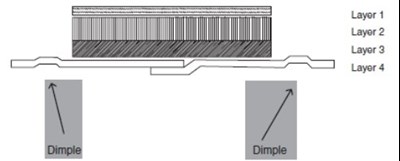Product Images Rivastigmine
View Photos of Packaging, Labels & Appearance
Product Label Images
The following 20 images provide visual information about the product associated with Rivastigmine NDC 0781-7309 by Sandoz Inc, such as packaging, labeling, and the appearance of the drug itself. This resource could be helpful for medical professionals, pharmacists, and patients seeking to verify medication information and ensure they have the correct product.
image 03

The text indicates the concentration of Rivastigmine in ng/mL for different dosages administered over a period of 24 hours. There were three groups of participants: one group received 13.3 mg/24 hours (n=19), one group received 9.5 mg/24 hours (n=22), and one group received 4.6 mg/24 hours (n=22). The concentration of Rivastigmine was measured and found to be 8 ng/mL or higher for the group receiving the highest dosage.*
image 05

This appears to be a medication dosing chart with various doses listed in milligrams per 24 hours. It also includes a reference to a placebo and a rating scale called ADCS-CGIC. The last line contains non-English characters and cannot be interpreted.*
image 06

The text describes two types of Rivastigmine Transdermal System, one with a dosage of 13.3 mg/24hr and the other with 0.5 mg/2éhr. The text also includes a chart showing ADCS-IADL change from baseline and weeks of treatment. The chart reveals that there is a statistically significant difference between the two dosages of the Transdermal System, with the 13.3 mg/24hr dosage showing clinical improvement.*
image 07

This document appears to be a clinical study report on the effectiveness of two dosages (13.3 mg/24h and 9.5 mg/24h) of the Rivastigmine Transdermal System in improving cognitive function as measured by the ADAS-Cog test. The report shows a significant improvement in ADAS-Cog scores for the 13.3 mg/24h dosage compared to the 9.5 mg/24h dosage.*
image 09

This is a clinical study evaluating the improvement of patients after treatment with Rivastigmine patch. The analysis shows LS mean diff. improvement, with corresponding values and levels of statistical significance. The study lasted for 700 days with a decline observed after 8 weeks of treatment. The LS mean and standard error values were adjusted for pooled center and baseline.*
image 11

This appears to be a list of body parts with certain locations specified, including the left or right upper arm, left or right side of chest, side, left or right upper back, and left or right lower back. This information may be useful for identifying specific areas of pain or discomfort.*
image 13

Protective liners refers to materials that are designed to provide a protective layer for a surface or object. The given text only mentions "Sticky surface of patch" which provides no context and is not clear which type of patch or what material is being referred to. Hence, a useful description cannot be generated with this text.*
image 17

This is a set of instructions to safely dispose of a slide folded patch. First, you should place the patch in the trash. Then, you need to fold the sticky sides of the patch together into an empty pouch that you saved. It is important to keep this pouch away from children and pets.*
* The product label images have been analyzed using a combination of traditional computing and machine learning techniques. It should be noted that the descriptions provided may not be entirely accurate as they are experimental in nature. Use the information in this page at your own discretion and risk.











